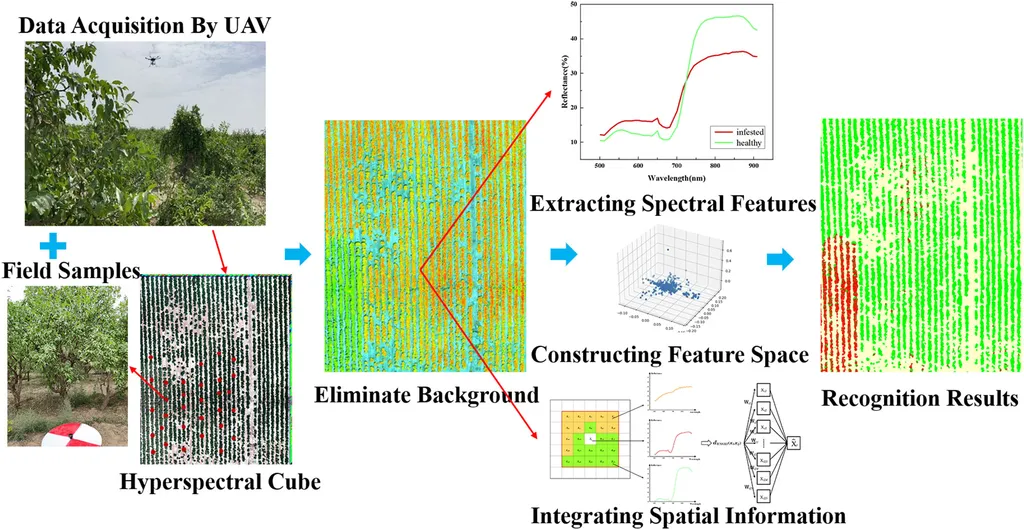In the heart of China, where the Lycium barbarum, or goji berry, thrives as a green superfood with immense market potential, a silent threat lurks. Mites, tiny yet destructive, can wreak havoc on the sprouts, causing leaf distortion and deformation that severely impact yield and quality. But a breakthrough in early detection, led by Chunyan Zhou from the School of Electrical Information Engineering, is set to revolutionize pest management in this vital crop.
The study, published in the *International Journal of Optics* (translated as *International Journal of Light*), employs hyperspectral technology, which boasts exceptional spectral and spatial resolution, to monitor mite infestations. “Hyperspectral imaging allows us to see beyond the visible spectrum,” Zhou explains. “It’s like giving farmers superpowers to detect pests before they cause significant damage.”
The research team collected hyperspectral data from Lycium barbarum sprout leaves, establishing a dataset representing four levels of pest severity. They then employed various classification models, including K-Nearest Neighbors (KNN), Random Forest (RF), Support Vector Machine (SVM), and a 1D Convolutional Neural Network (1D-CNN). The results were impressive, with the 1D-CNN model achieving the highest classification accuracy of 96.08%, and RF also performing well with 94.12% accuracy.
“The 1D-CNN model, in particular, demonstrated superior precision, recall, and F1-score when classifying severe and moderate pest infestations,” Zhou notes. This level of accuracy is a game-changer for farmers, enabling them to adopt targeted control measures and reduce reliance on chemical pesticides.
The implications for the agricultural sector are profound. Early detection of pests and diseases can lead to significant cost savings, improved crop yields, and enhanced product quality. “This study presents an efficient, non-destructive technical method for the early detection of pests and diseases in Lycium barbarum sprouts,” Zhou states. “It’s a step towards precision agriculture, where technology guides farming practices for optimal results.”
The research methodology provides a scientific foundation for future developments in precision agriculture management. As the world grapples with the challenges of climate change and food security, such innovations are crucial. They not only enhance agricultural productivity but also promote sustainable farming practices.
In the broader context, this study highlights the potential of hyperspectral technology in agriculture. As Zhou puts it, “Hyperspectral technology can effectively detect changes in leaf physiological structure, offering a theoretical foundation for early pest detection.” This technology could be adapted for other crops, paving the way for a new era of smart farming.
The study’s publication in the *International Journal of Optics* underscores its significance in the scientific community. It’s a testament to the power of interdisciplinary research, combining optics, machine learning, and agriculture to address real-world problems.
As we look to the future, the integration of advanced technologies like hyperspectral imaging and deep learning models promises to transform agriculture. It’s not just about feeding the world; it’s about doing so sustainably and efficiently. And with researchers like Chunyan Zhou at the helm, the future of farming looks brighter than ever.

